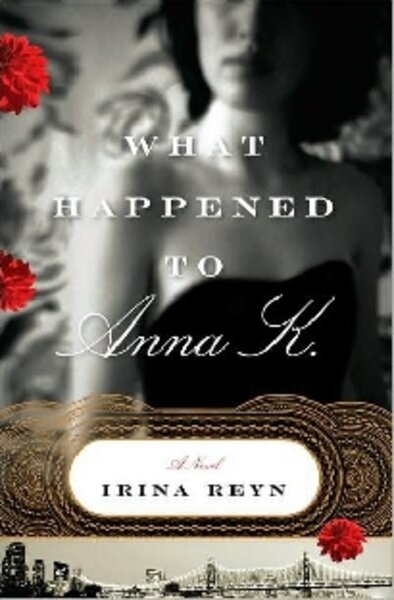What happened to Anna K.
Loading...
All happy heroines resemble one another, each unhappy one is unhappy in her own way. Although, actually, readers of Irina Reyn’s debut novel, What Happened to Anna K. might notice that her heroine’s brand of unhappiness bears certain similarities to a tragic figure of classic Russian literature.
Reyn, a Russian-American who emigrated from Moscow as a child, has scooped up Leo Tolstoy’s Anna Karenina and carried her over to the New World with her – lock, stock, and affair. Her Anna K. is a Russian Jew whose family lives in a Russian enclave in Queens. Fast approaching middle age with a dead-end job in publishing, Anna agrees to marry the wealthy Alex K. She has a baby, Serge, and is still sorting out the compromises of her life when she sets eyes on her younger cousin Katia’s boyfriend, an adjunct professor and would-be novelist.
Anna K., a romantic who read “Wuthering Heights” 14 times growing up, has always longed to be the main character of a novel – preferably a big 19th-century one by a literary giant. “She would imagine it was she who was the heroine, willing powerful lovers to prostrate themselves before her, allowing them to sob their love to her in the middle of a rainstorm, at balls, inside carriages.” (Reyn has a great deal of fun with such jokes – on Page 5, for example, she announces that “ever since she was a little girl, Anna had loved trains.”)
After she marries Alex K., Anna has an exclusive address on the Upper East Side and enough tasteful black dresses to enchant the entire male population of Rego Park. But she is as out of place among the Russian nouveau riche as she was among her extended family’s conservative form of Judaism. There’s a hysterical scene when Anna’s book club dismisses “Wuthering Heights” as so much nonsense and opt for Sophie Kinsella, of the “Shopaholic” series, for their next choice. “C’mon ladies ... who would you prefer?” Nadia, the Princess Betsy stand-in, asks. “The caveman running around the forest or that nice Linton?”
Not to give too much away, but just as a remake of “Pride & Prejudice” isn’t likely to end with Elizabeth as a penniless spinster wishing she’d taken up Mr. Collins on his generous proposal, an update of “Anna Karenina” isn’t apt to conclude with the main character being showered with roses by her adoring husband.
“What Happens to Anna K.” is a smart, witty, at times downright funny read. But there’s no doubt that Anna is definitely harder to empathize with in her modern incarnation. Women’s lives in Europe and America today are far less circumscribed than those of their 19th-century counterparts. So when a heroine from the 1800s is plunked down in 20th-century America, she can seem oddly passive – not to say whiny. I haven’t yet read an update of “Persuasion” that was fully satisfying, for example, although writers, bless them, keep trying. There were times while reading “What Happened to Anna K.” where I wanted to grab Anna by the shoulders and yell, “Get a job already!”
Divorce, for another thing, is not the extreme rarity it was in the 19th century, and divorced women don’t tend to become automatic pariahs – although that’s not necessarily true among certain immigrant communities, a fact that Reyn exploits.
Literary updates have become perennially popular (my favorite is still Zadie Smith’s “On Beauty,” which set E.M. Forster’s “Howard’s End” among a mixed-race family in Massachusetts), but Reyn’s conceit is a particularly captivating one – and particularly tricky to carry off. Tragic heroines such as Anna Karenina or Emma Bovary belong so precisely to their particular time and society. To pry them out of their natural setting but still keep them recognizable takes a great deal of ability. Reyn, with her wry, deft writing and her strong characterizations of immigrant life in Queens, has plenty to spare. It also helps that she’s interested in more than just writing a romance – using Anna to examine questions of how to have a happy life and how to forge an identity in an adopted country when your homeland has irrevocably changed.
In an early chapter titled “The Great Russian Soul,” Reyn lays out her marching orders: to examine the “velikaia russkaia dusha” and the effects of modernity and immigration on said institution. “Fyodor Dostoyevsky called it the ‘Russian disease ... an indifference toward everything that is vital – toward the truth of life, everything that nourishes life and generates health.’ But is there truth to any of it, or is it just a story, a myth created to justify one’s suffering?... And what happens to the Great Russian Soul when it is transplanted? Can it flourish in Rego Park, Queens, for example?”
That may be an open question, but it turns out that the Russian novel can thrive there just fine.
Yvonne Zipp regularly reviews fiction for the Monitor.






